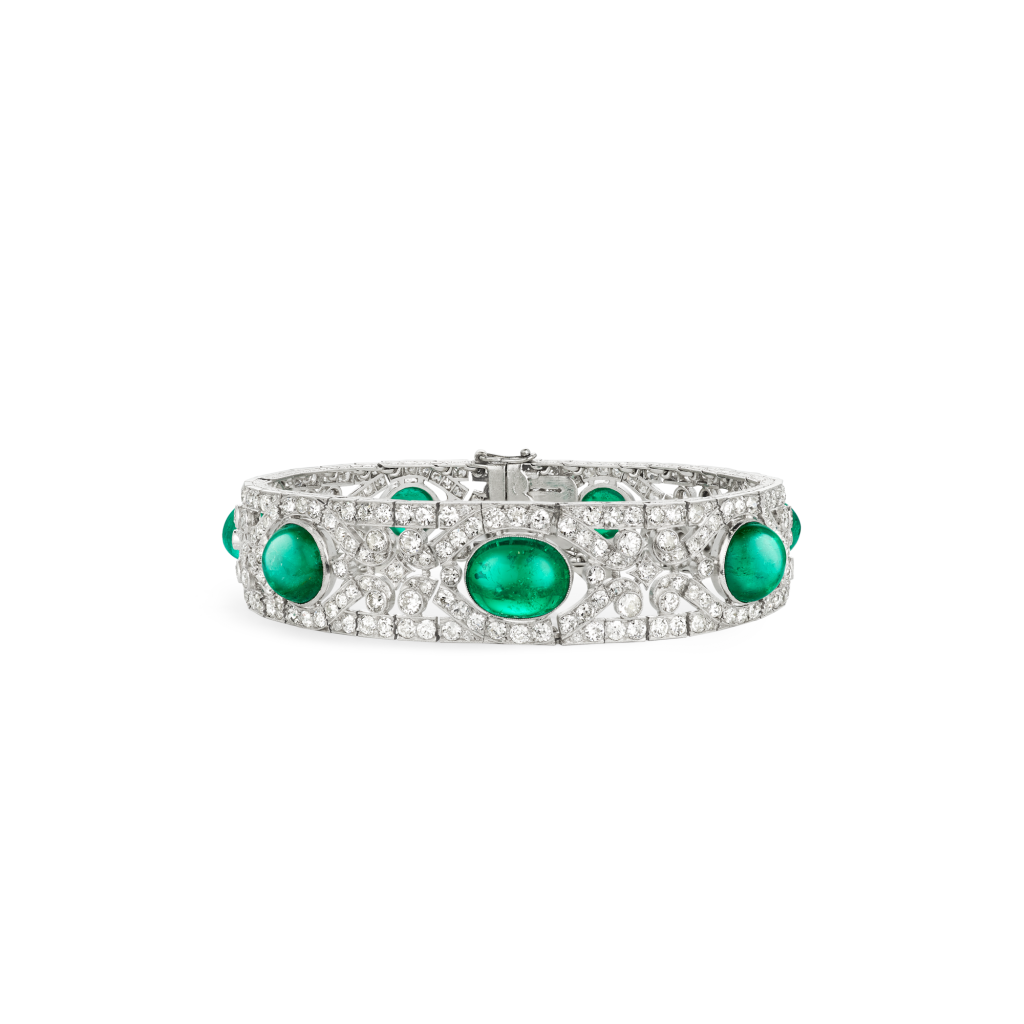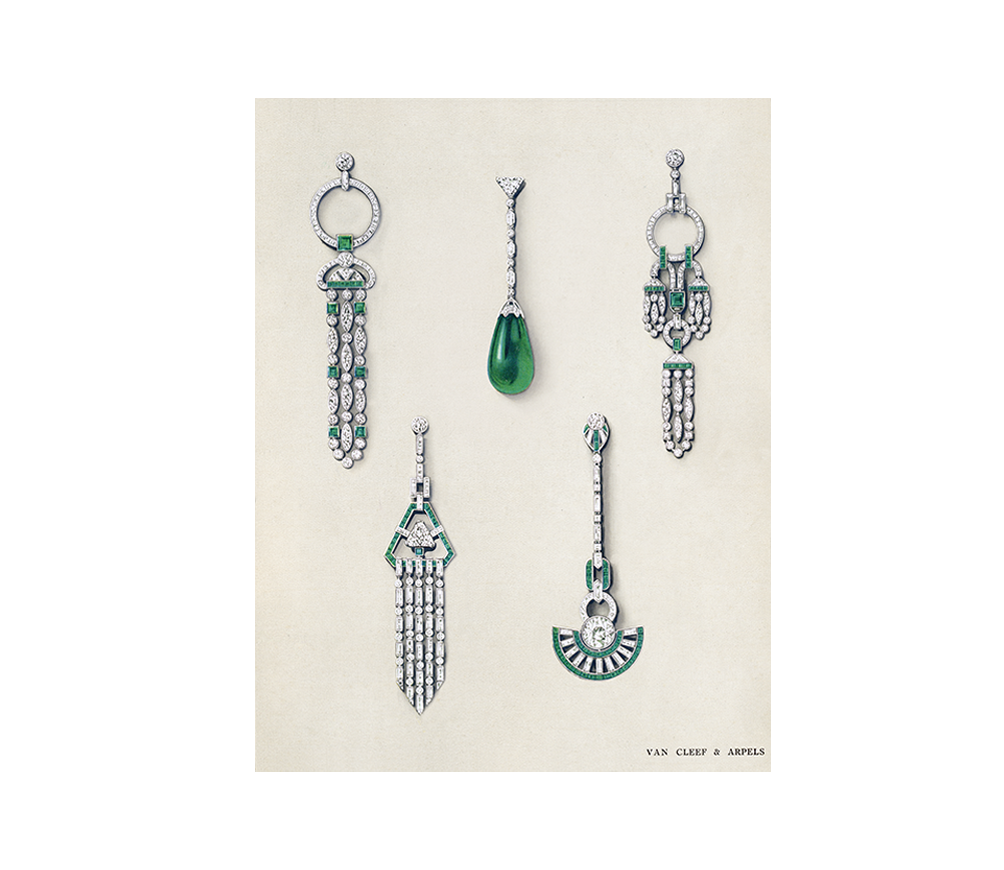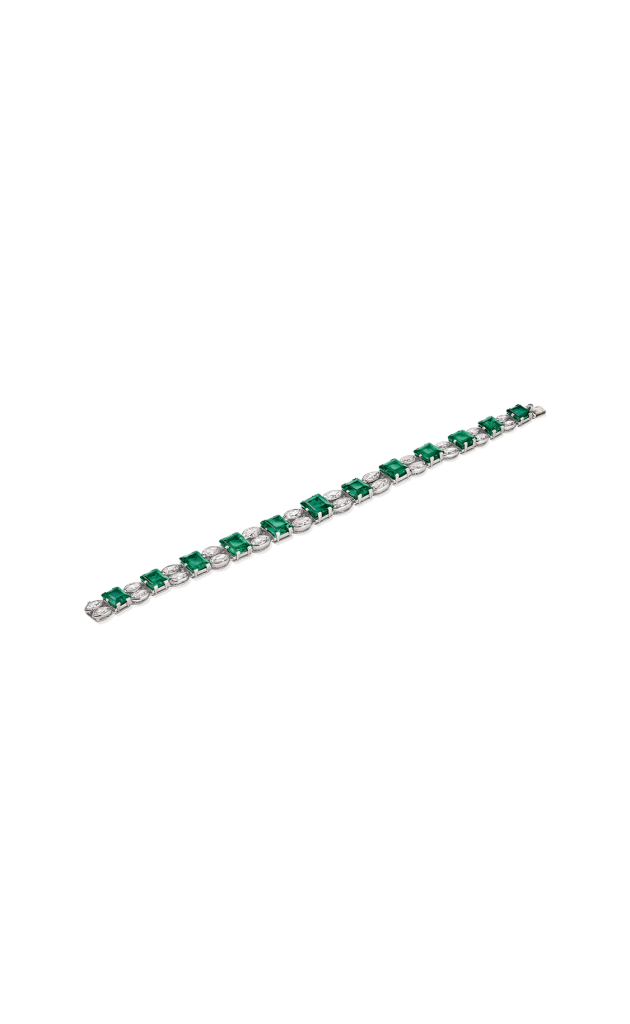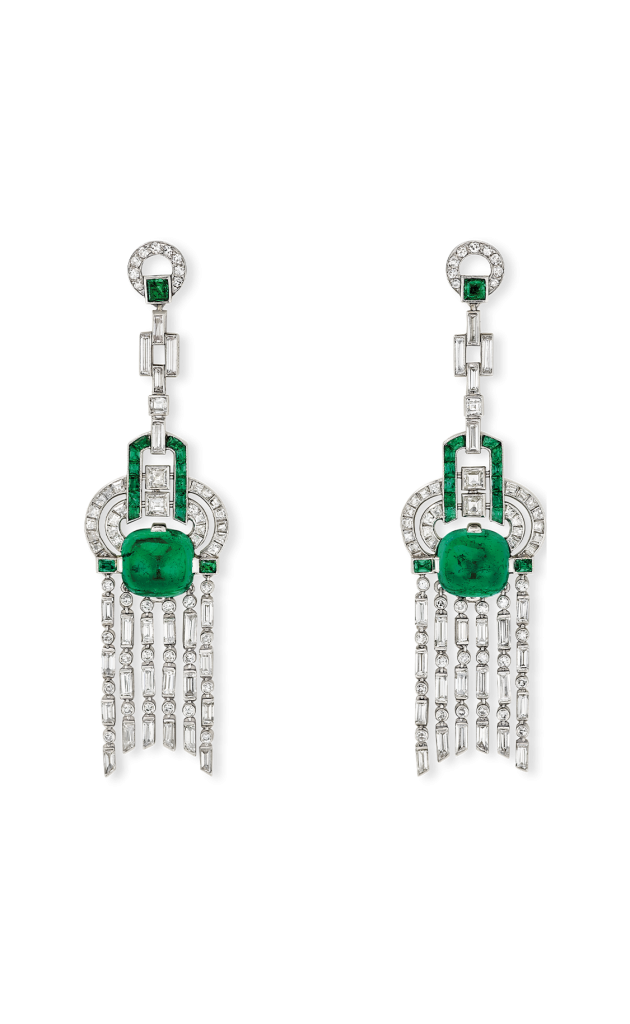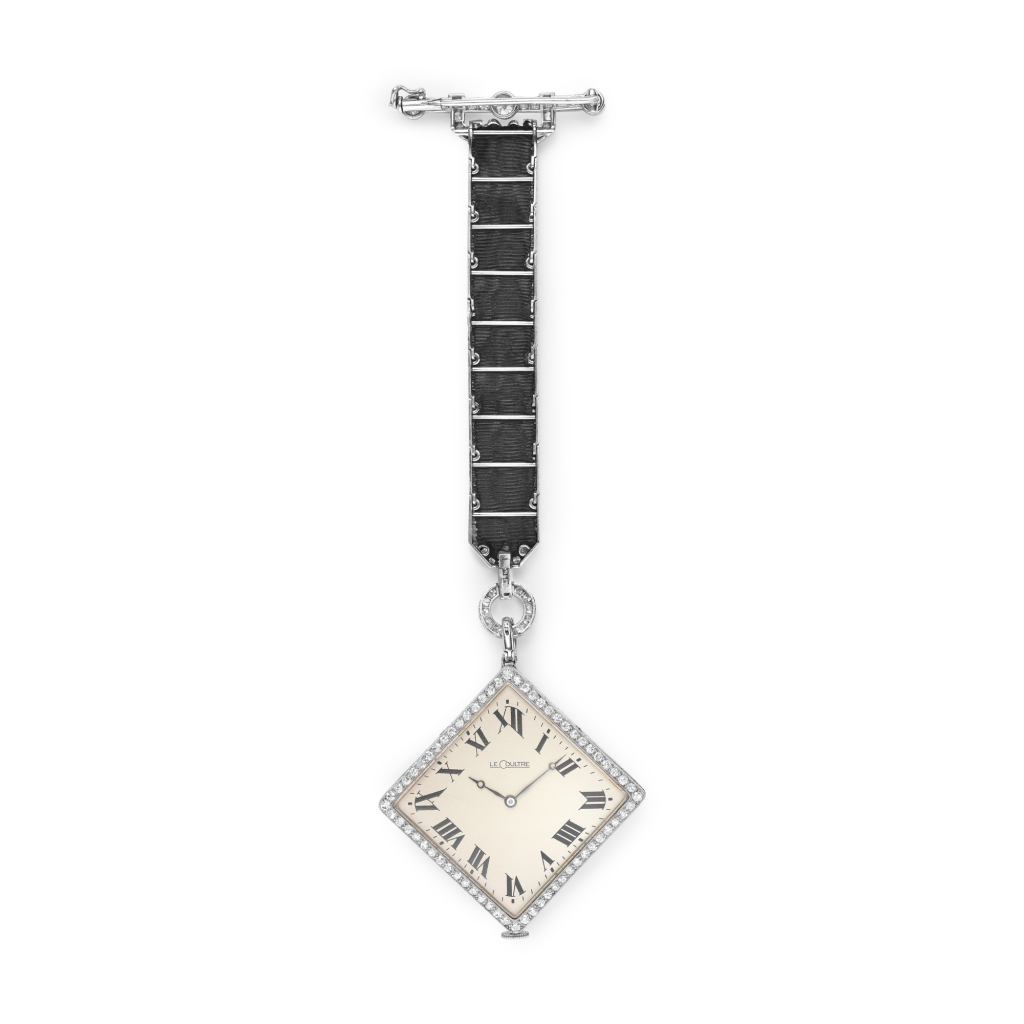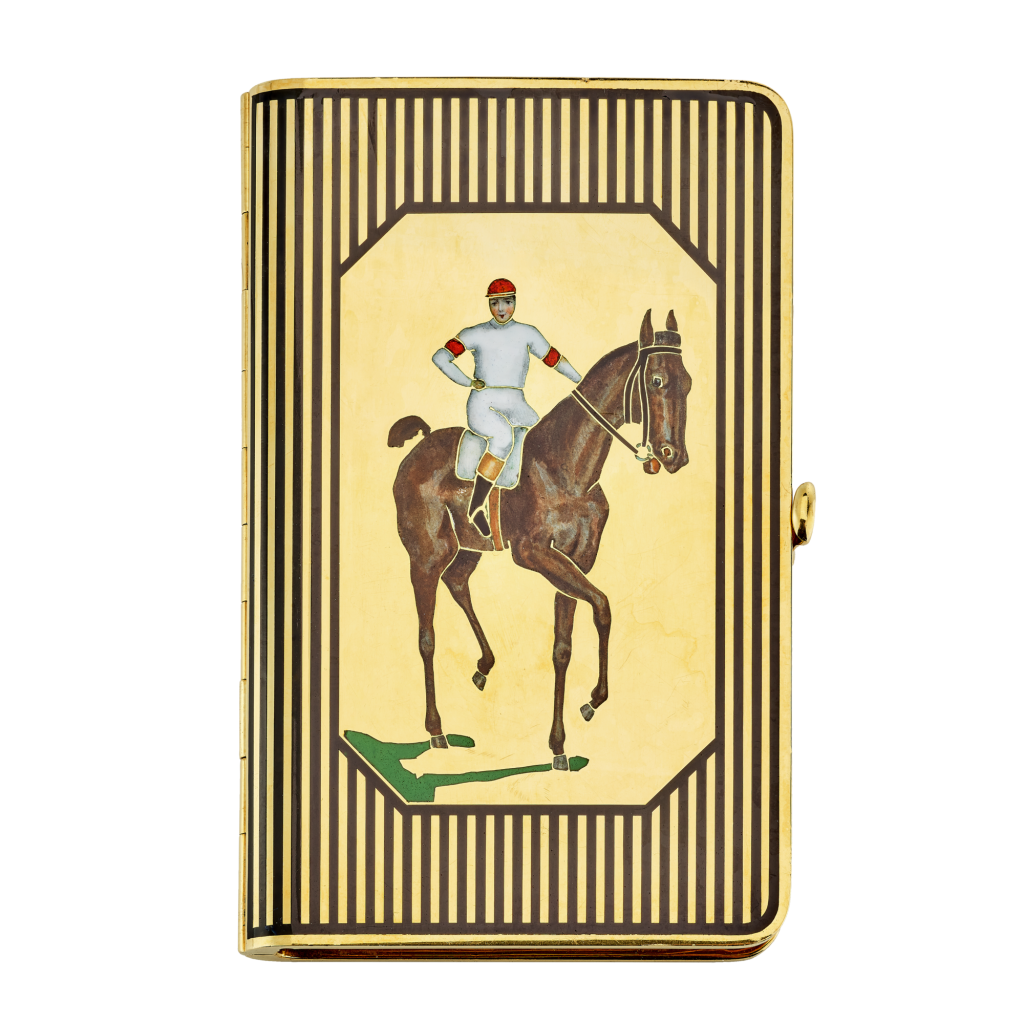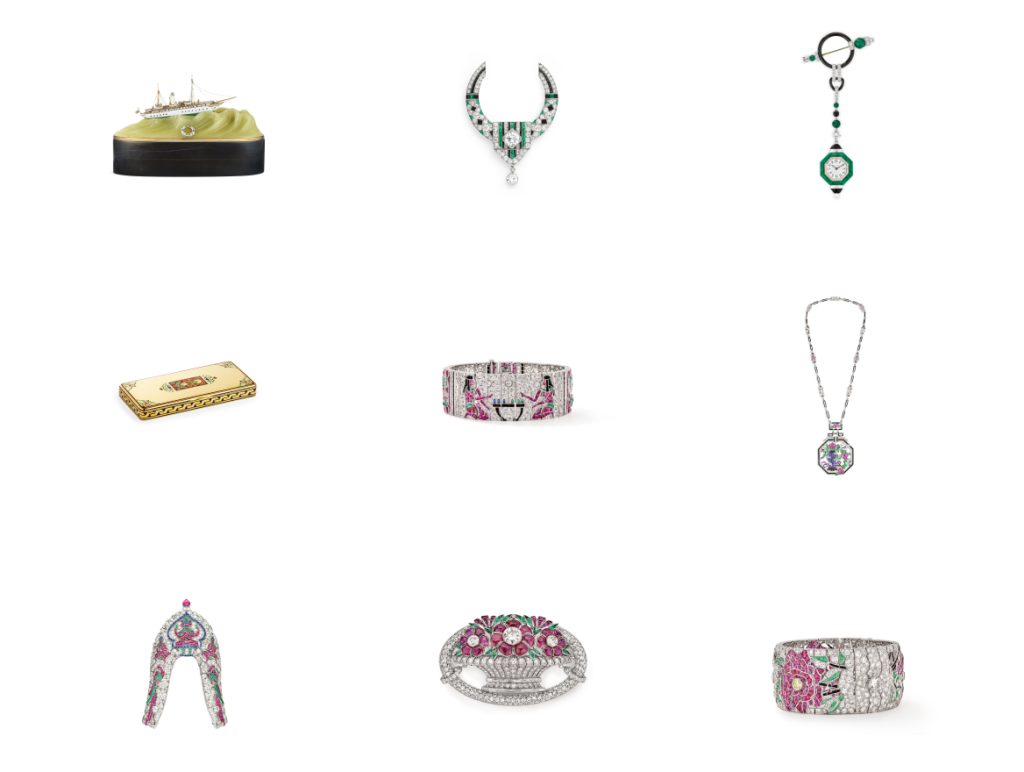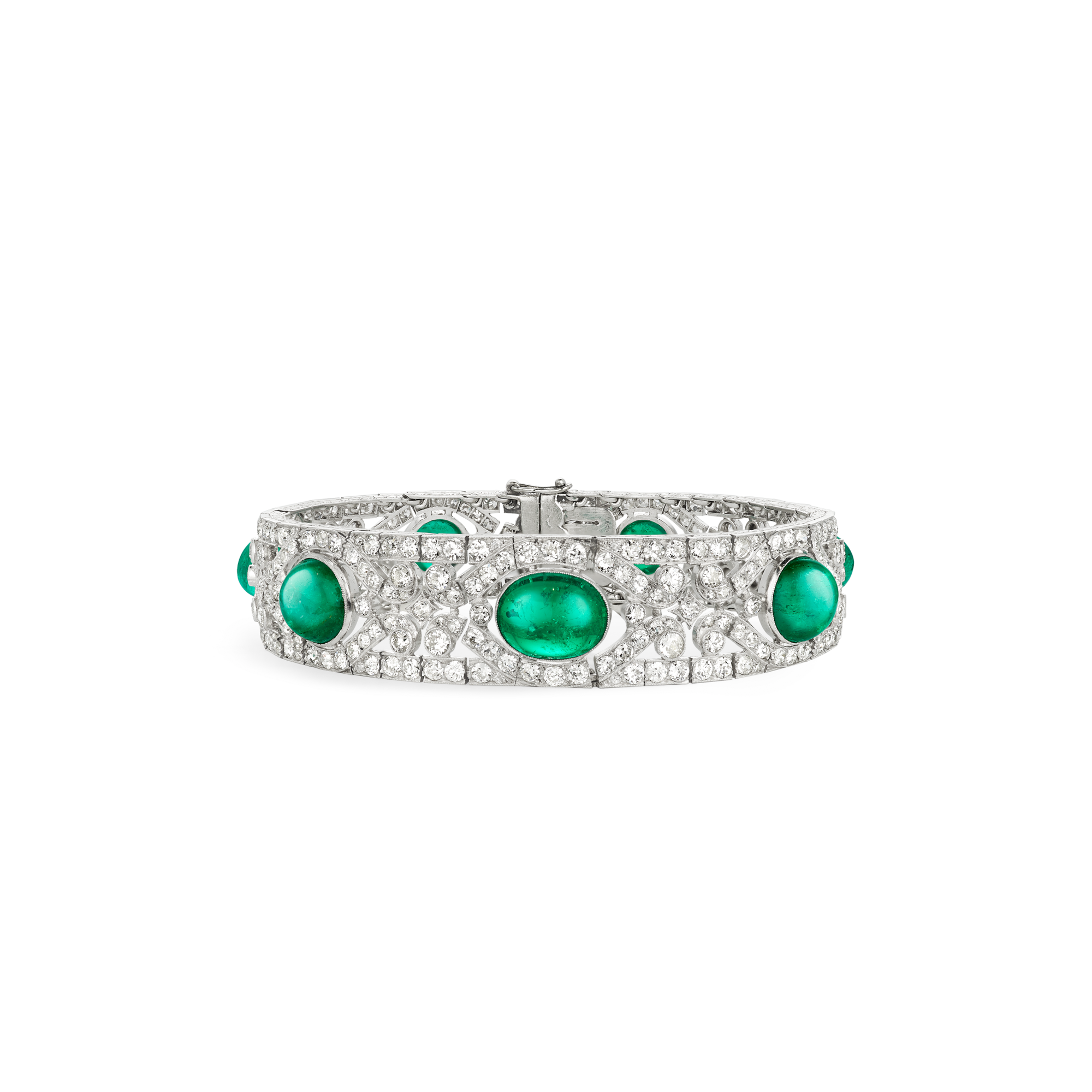
Bracelet

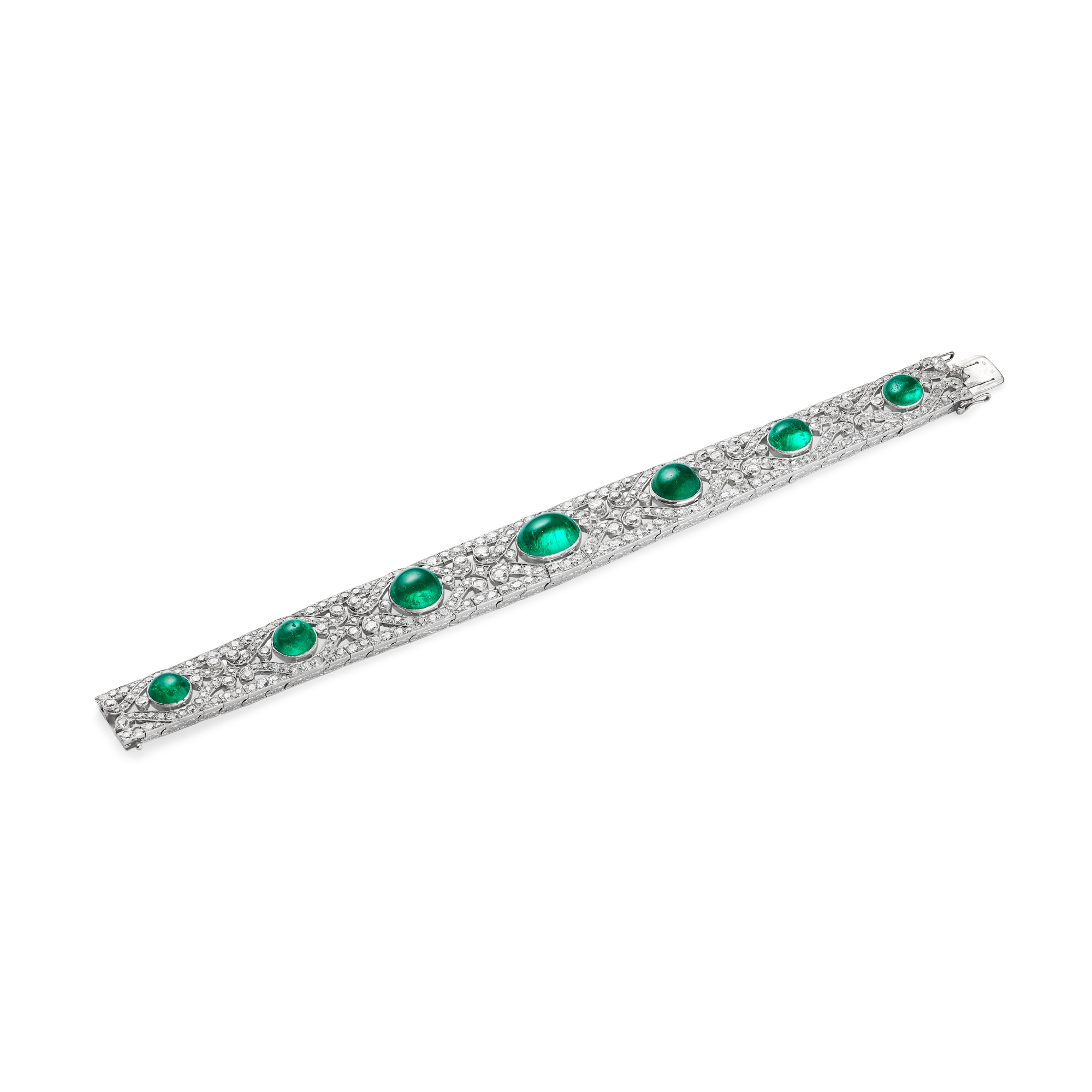
Creation details
- Creation year 1921
- Stone Diamond
- Stone Emerald
- Material Platinum
- Usage Bracelet
- Dimensions 185 × 18 mm
In the early 1920s, Van Cleef & Arpels produced band bracelets with geometric forms as well as with decoration that, while stylized, was nonetheless in keeping with an ornamental tradition.
This articulated model is cadenced by seven oval cabochon emeralds enlivened with inclusions whose arbitrary nature contrasts with the strict symmetry of the decoration, itself borrowed from the vocabulary of the eighteenth century. This decoration is composed of a succession of simplified rinceaux in platinum and brilliant-cut diamonds. The delicate openwork formed by the setting is partially filled by lozenges set with diamonds. The entire composition is framed by two rows of brilliants that highlight the contours of the piece.
Emeralds in art deco design
This bracelet is representative of the “openwork compositions based on the principle of lace and guipure lace” from the early 1920s, “with a large stone in the center,”1Anonymous, “Georges Fouquet,” La Renaissance de l’art français et des industries de luxe (January 1924): n.p. fulfilling the “first article of the Modern Jewelry Credo”: “the large stone must […] act as a magnet within an entourage of small brilliants.”2Anonymous, “Van Cleef & Arpels,” La Renaissance de l’art français et des industries de luxe (January 1923): 365.
The diversity of Art Deco
Compared to other bracelets of the period with more distinctive geometric stylization, this one also illustrates the diversity of decorative languages used by art deco designers.
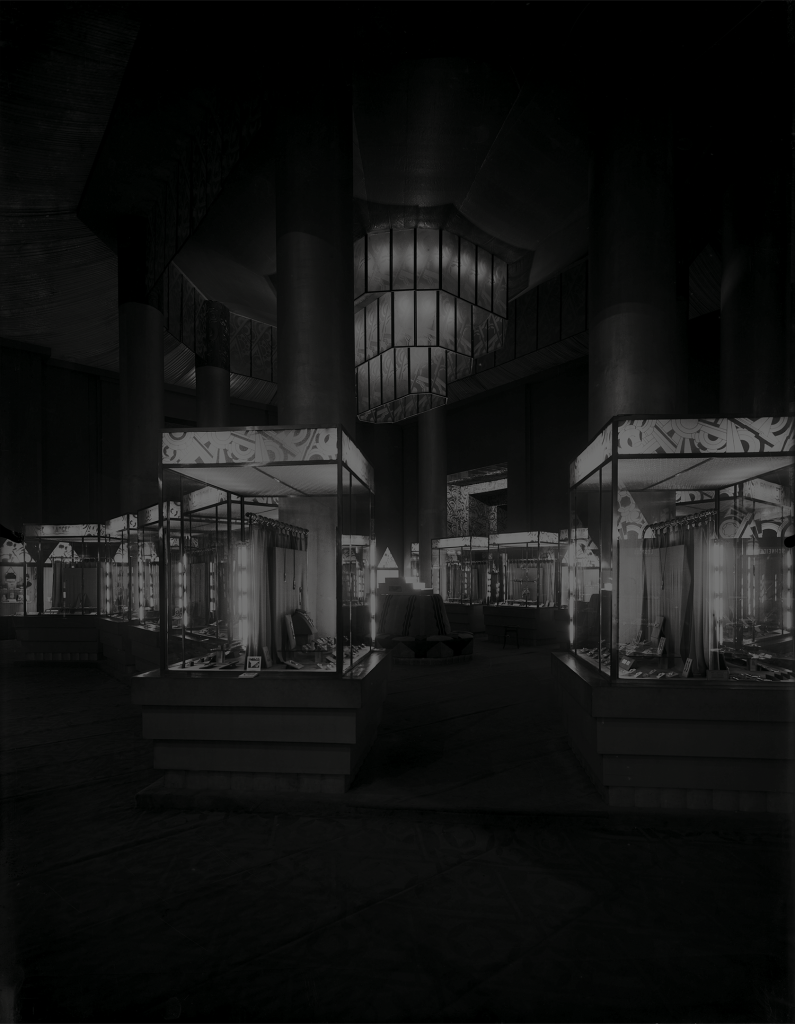
To go deeper
